| |
Farnesyl-Transferase inhibitors: Identification and validation of a class which reactivates HIV latent expression and is synergistic with other mechanisms in vitro
|
| |
| |
6th Intl Workshop on HIV Persistance during Therapy Report Summary - Report by David Margolis MD, UNC Chapel Hill and the Collaboratory of AIDS Researchers for Eradication (CARE) - (12/15/13)
Reported by Jules Levin
6th HIV Persistence Workshop
Miami, December 5, 2013
Richard Barnard1, Scott Wolkenberg1, David Powell4, Jon Karn2, Biswajit Das2, Curtis Dobrowolski2, David Margolis3, Nancie Archin3, Kate Holloway1, I-Ming Wang1, Erica Cook1, Jing Li1, Gregory Adam1, William Newhard1, Michael D. Miller1, Daria Hazuda1
1Merck Research Laboratories, One Merck Drive, NJ
2Case Western Reserve University, Dept. of Molecular Biology and Microbiology, 10900 Euclid Ave, Cleveland, Ohio 44106
3Microbiology and Immunology, Epidemiology, School of Medicine, University of North Carolina
4Inception Sciences Canada, Vancouver, Canada
PROGRAM ABSTRACT:
Farnesyl-Transferase Inhibitors: Identification and Validation of a Class which Reactivates Hiv Latent Expression and is Synergistic with Other Mechanisms In vitro
R Barnard1, S Wolkenberg1, D Powell4, J Karn2, B Das2, D Margolis, N Archin, K Holloway1, IM Wang1, E Cook1, J Li1, G Adam1, W Newhard1, MD Miller1, and D Hazuda11Merck Research Laboratories, NJ; 2Case Western Reserve University, Dept. of Molecular Biology and Microbiology, Euclid Ave, Cleveland, OH; 3Microbiology and Immunology, Epidemiology, School of Medicine, University of North Carolina; 4 Inception Sciences Canada, Vancouver, Canada
To date only a limited number of mechanisms have been identified which induce HIV expression in vitro in latently infected cell lines, primary cell models and ex vivo cells from HIV infected subjects. In some cases these have been shown to work synergistically, suggesting the potential for increased effects through combination, however, many of these are not ideal with respect to safety and tolerability thus novel approaches to build combinations are needed. To identify novel mechanisms with the potential for use in combination to induce latent HIV, we conducted an ultra-high throughput screen (uHTS) of 2.9 million compounds in the presence of sub-optimal concentrations of the histone deacetylase inhibitor (HDACi) SAHA (EC10; 250 nM) using a T-cell HIV latency model sensitive to compounds which activate HIV latency in primary T-cells (HDACi's, bromodomain inhibitors and PKC agonists). Confirmed hits were titrated in the presence or absence of SAHA (250 nM) and screened for cytotoxicity as well as NFkB activation to eliminate compounds that could cause T-cell activation.
AMONG ~4,500 CONFIRMED HITS, ~800 FARNESYL-TRANSFERASE INHIBITORS (FTI) FROM THREE DISTINCT MECHANISTIC CLASSES WERE IDENTIFIED: 1) peptidomimetic inhibitors which mimic the CaaX peptide of the substrate , 2) non-peptidomimetic inhibitors that coordinate Zn2+ ion at the active site and 3) non-peptidomimetic inhibitors that bind at the 'exit-groove'. We observed a positive correlation between the potency of FTi's in the HIV latency assay (EC50) and in a farnesyl-transferase enzyme assay (IC50) irrespective of mechanism and knock-down of the FT beta subunit induced of HIV expression in this cell model consistent with on target activity.
Importantly, FTi's and SAHA were synergistic both in cell models and resting T-cells isolated from HIV patients suggesting the potential for increased efficacy in combination and providing proof of concept for identifying synergistic combinations using this novel screening paradigm.



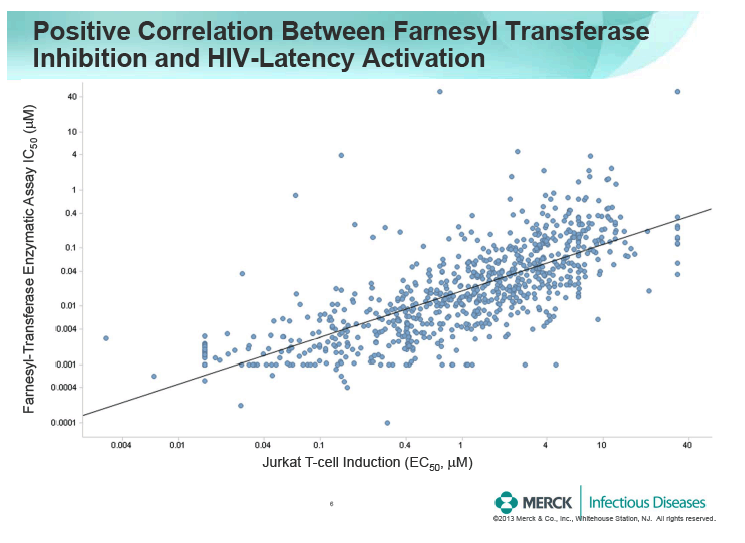

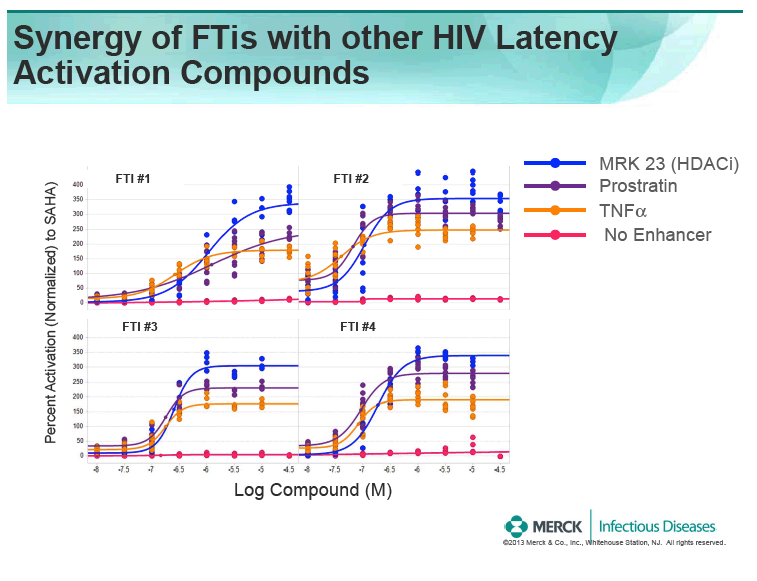
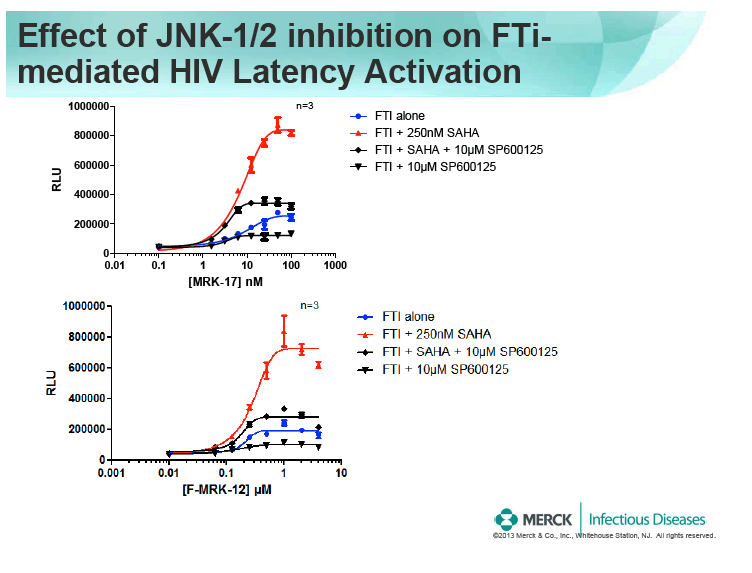

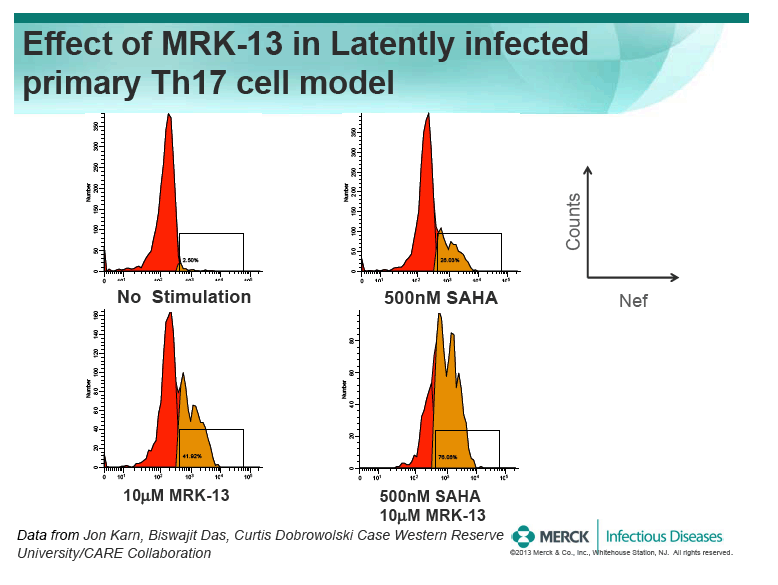
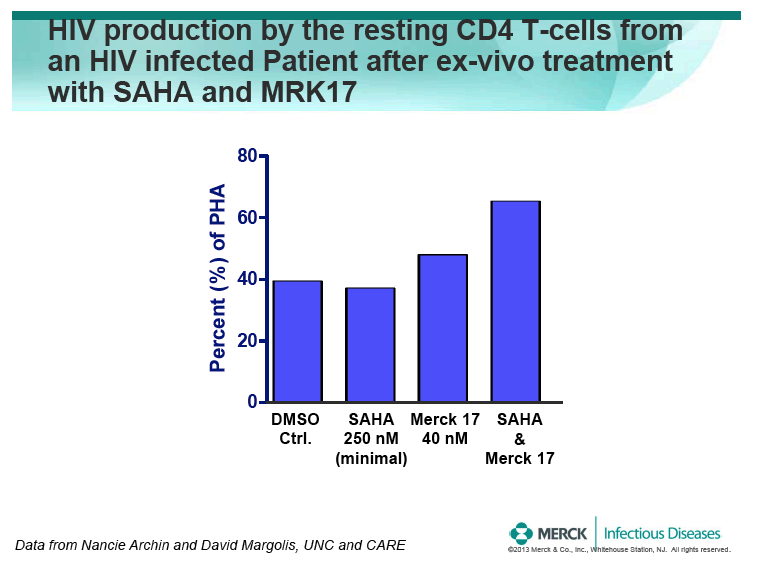
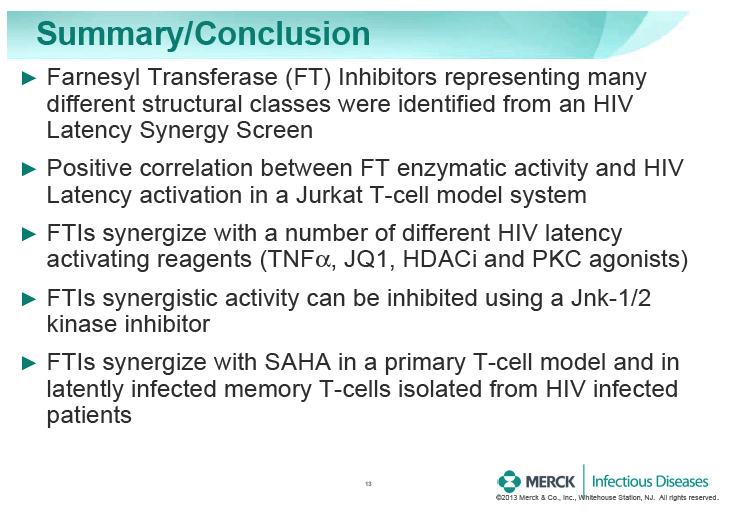
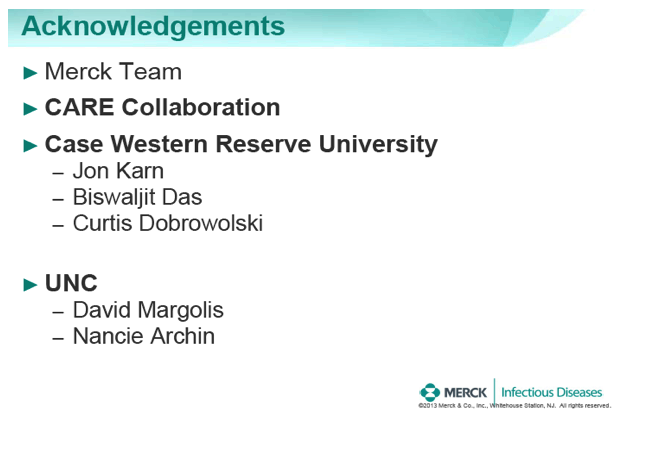
|
|
| |
| |
|
|
|